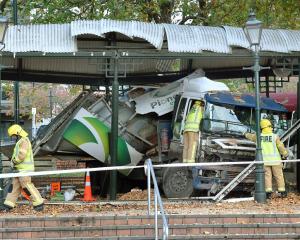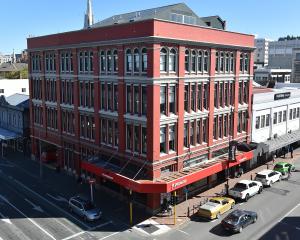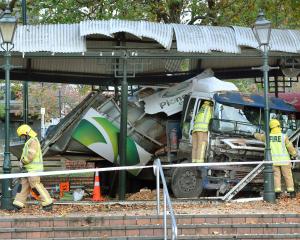The rockfalls - and the decision to move the Cave Sessions 2010 dub/roots music event - on Wednesday, just days after a council report cited its specialist engineering consultant's advice while concluding the site was safe to host the event.
Up to 1000 revellers had been expected to descend on the beach this afternoon and evening, partying in and around a sea cave at the bottom of a cliff, despite safety concerns and other objections voiced by some residents.
Organisers announced on Wednesday afternoon they would be moving the event to Dunedin nightspot Sammy's because of safety concerns, after seeing rocks falling during an inspection that morning.
Asked about the consultant's advice yesterday, council resource consents manager Alan Worthington said the council was happy with the advice received and would not be following it up with the company, MWH.
"We are using the best advice at the time," he said.
On Wednesday, organiser David Booth told the Otago Daily Times an independent geological specialist checking the site with organisers that day had voiced concern at the stability of boulders at the top of the area's cliff.
The check was a condition of the consent granted by council, and during the trip the group witnessed "a few" small rockfalls.
The specialist feared recent rainfall might have loosened boulders perched about 30m above the party zone, prompting Mr Booth to move the event rather than risk the safety of those at the event, he said.
Long Beach Amenities Society spokesman Nic MacArthur yesterday said that raised questions about the quality of the MWH advice to the council.
The cliff held lumps of volcanic and basalt rock the size of footballs, and larger, which were held in place by softer - but solidified - ash deposits, he said.
Cracks were clearly evident in the cliff, and the rocks could kill if they dislodged and struck someone below, he said.
"You can see all sorts of stuff that's cracked and broken and will have to come down one day, sooner or later.
"I think the first [MWH] report the council got sort of minimised the geological hazard to start with, and then it took that and said `We don't think it's sufficiently risky to cancel the event'."
Council planner Darryl Sycamore, in a decision granting resource consent, noted concerns about the stability of the cliff raised during a public meeting at Long Beach earlier this month.
However, the consultant's advice was the integrity of the cliff had been checked and found to be "well cemented", with no evidence of regular rockfalls.
While it could not be guaranteed a rockfall would not occur during the event, foot traffic and amplified music would not make one more likely, and a party at the site was "not . . . an inappropriate use of the site from a hazards perspective".
Mr Sycamore concurred with the advice, but identified conditions of consent including fencing, checking for loose rocks and propping up one identified rock slab inside the cave to further reduce any risk.
Mr Worthington disagreed with Mr MacArthur's suggestion hazards had been minimised or missed, and pointed out Mr Booth had indicated the event would be shifted if bad weather, which could destabilise the boulders, was encountered before the event.
Nobody from MWH's Dunedin office was available to comment on their advice yesterday.












